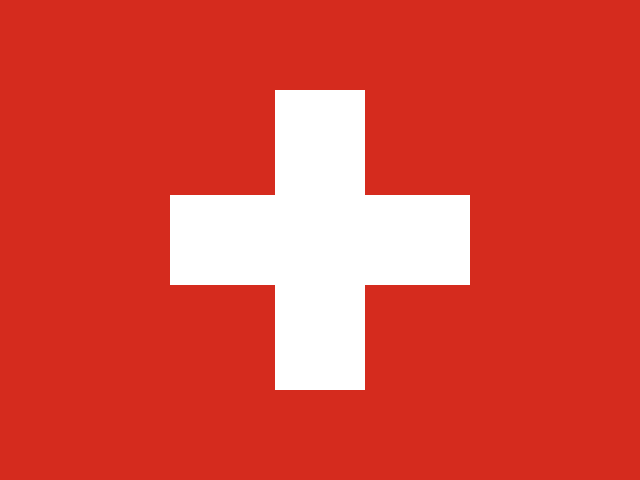
Switzerland
Layoffs have become commonplace in Switzerland’s small media market. The economic situation is difficult for private media companies and also perhaps especially for the public broadcaster, which will face budget cuts of between 20% to 50% in the next few years.
The business of news is becoming increasingly difficult, even though the number of people who say they pay for online news has recently increased (to 22%). Advertising revenues are still down compared to a decade ago, and almost half of the adult population belongs to the group of ‘news deprived’ users with a clearly limited news diet (fög – University of Zurich 2024). Against this background, journalist layoffs intensified in 2024. Ringier, which publishes tabloid-like brands such as Blick, is losing about 50 employees, seven journalists among them, and TX Group, the company publishing brands such as Tages-Anzeiger and 24heures, is losing around 50 journalists on top of other employees. Both companies are now increasingly reliant on revenues from their digital marketplaces and are centralising news production across some titles to save money, which raises concern about the dilution of journalistic resources and editorial distinctiveness at the local level. CH Media, owner of watson.ch and many regional brands, closed several of its regional platforms which had bundled print products, radio stations, and online news sites. By comparison, the NZZ media company seems to be doing better, as it reduces its share in the joint venture with regionally oriented CH Media and enjoys rising numbers of subscribers and revenue with its own core brands, including in the larger market in Germany. A small number of online pure players focusing on ‘slow journalism’ or on (hyper)local news have gained a foothold, such as Republik, Hauptstadt in Bern, or Bajour in Basel. However, these niche players currently operate with relatively small budgets and audiences. The growing audience using TikTok for news (+7pp), particularly with under-35s and in French-speaking Switzerland, suggests there may be potential for Swiss providers of more mainstream youth-oriented video-rich online content.
There are no immediate plans for subsidies to support online journalism. However, after successful lobbying by publishers, legacy media will get additional subsidies for print distribution (over €30m p.a.). Even so, in 2024 the larger companies announced the closure of their few remaining printing presses. Publishers are also hoping that a new draft law due in 2025 will force platforms to pay copyright fees for link previews, news snippets, and possibly also summaries by AI chatbots. It remains to be seen whether and how that domestic debate will be shaped by international tech platforms such as Meta, Google, and OpenAI, which have just expanded their offices in Switzerland.
The larger publishers are still pursuing a strategy to pool their data together in a Digital Alliance. While the sharing of traffic and user data seems to be on track in their project OneID, their project OneLog, which involves a shared, single login across news brands, is still only partially operational after a cyber-attack in late 2024.
Most of the discussion focuses on the public broadcaster SRG SSR, whose SRF and RTS brands continue to be the most used and most trusted. SRG SSR faces substantial budget cuts of uncertain amounts, given rising inflation and declining advertising revenue but especially as the licence fee (currently equivalent to €350 per household p.a.) plus the fee paid by large companies, which contributes around 10% of its overall revenue, is expected to shrink. In a ‘worst case’ scenario for SRG SSR the revenues from the licence fee could be halved, depending on the outcome of a referendum put forward by right-wing politicians from German-speaking Switzerland, which could take place in 2026. Parliament is currently discussing whether to propose an alternative with slightly lower fee reductions. The federal government has separately already announced a slight reduction by 2029. Even in that ‘best case’ scenario, SRG SSR expects its budget to fall by almost 20%, with a loss of roughly 1,000 jobs by 2029, and it has already announced more than 100 redundancies and closure of popular entertainment and long-form culture and science programmes.
Several companies are experimenting with AI within newly established guidelines. Most are proceeding with caution in the editorial space, using AI primarily to generate summaries or regionally customised short items or to reformat content. Surprisingly though, in a special anniversary edition, 20 Minuten, Switzerland’s largest print and online brand, showed non-declared AI-generated pictures of fake members of the public giving testimonials about why they like 20 Minuten. Irrespective of this episode, Swiss audiences remain sceptical towards the use of generative AI, expect transparency, and believe that media companies do not use AI responsibly enough (Vogler et al. 2024).
Linards Udris and Mark Eisenegger
Research Center for the Public Sphere & Society (fög), Department of Communication and Media Research (IKMZ)/University of Zurich
Pay for online news
22%
Trust in news overall
46%
(+5)
14/48
French-speaking: 40%
German-speaking: 49%
Overall trust levels tend to fluctuate. After a three-year decline, trust in news has recently increased again, albeit only in German-speaking Switzerland. Brands from the public broadcaster remain the most trusted in both German-speaking and French-speaking Switzerland, followed by subscription-based newspaper brands. Less trust is placed in tabloids, digital-born brands, and news from email providers (Blue News, MSN, Yahoo!, GMX).

